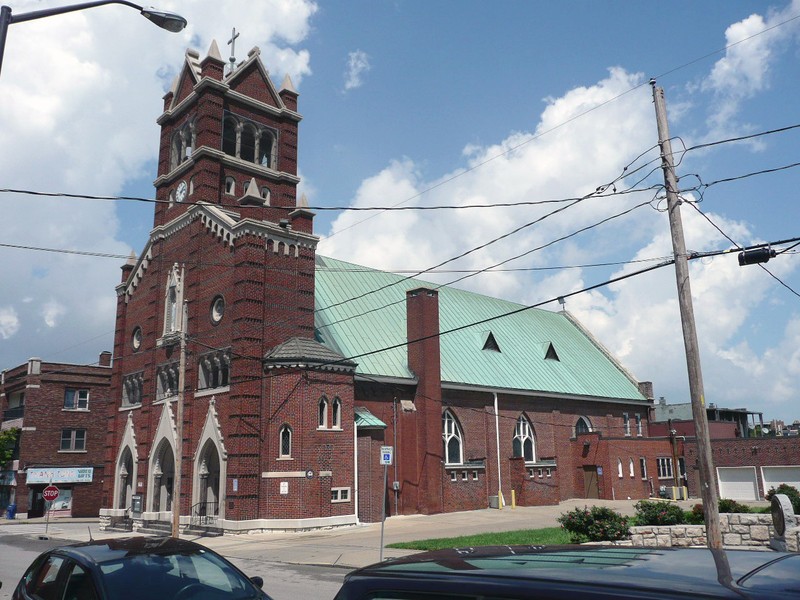Holy Rosary Catholic Church
Introduction
Text-to-speech Audio
Holy Rosary Catholic Church was built in 1903 in the heart of a Kansas City neighborhood that what was once known as "Little Italy" and is today known as Columbus Park. Beginning in the late 1800s, Italian immigrants began settling in the neighborhood and, over time, they developed an established and distinct community with Holy Rosary at its center. A fine example of Gothic Revival architecture, the church's most notable features include three pointed arch entrances with arcades above each, a pair of circular trefoil niches on either side of a niche displaying a statue, and an arcaded bell and clock tower. The church is a contributing property of the Holy Rosary Historic District, which was listed on the National Register of Historic Places in 2007.
Images
Holy Rosary Catholic Church was built in 1903 and served as the religious and cultural heart of the Italian community in Kansas City.

Backstory and Context
Text-to-speech Audio
While immigrants from other countries who usually moved to suburban neighborhoods, Italians tended to remain and establish communities in the neighborhoods where they first settled. As a result, they created what was known as "Italian immigrant enclaves" in cities around the country that were permanent and family oriented.
Most of the first Italian immigrants in Kansas City arrived from the city of Genoa, Italy. In the 1880s, they primarily came from the regions of Basilicata and Calabria. Single men immigrated as well but they typically intended to earn a fortune and return to Italy. Between 1890 and 1920, most of the Italian immigrants came from Sicily. In fact, by 1929, around 85% of the Italian population in Kansas City was Sicilian. Those who made the journey were often poor farmers who were the heads of households. They were unskilled laborers but found work in meat packinghouse, warehouses and railroads and some even became street vendors. They sent money to Italy to pay for the rest of their families to come.
By World War I, almost 3,000 Italians had settled in Kansas City and were the city's largest ethnic group at the time. They had begun to invest in the neighborhood itself and as a result built apartments and houses and established a variety of business as well. A number of professionals lived in the neighborhood including real estate investors, shopkeepers, lawyers, bankers, and doctors. Italian immigration to Kansas City had largely ended by 1930.
Holy Rosary Catholic Church was established in 1891 by Rev. Ferdinando Santipolo. Congregants first worshipped in a storeroom at 5th and Forest Streets. Five years later, a small wood-frame church was built. Unfortunately, a fire destroyed it 1903 but the altar, which was dedicated to St. Anthony of Padua, was undamaged. The present church was built on the same location.
Other immigrants have lived in the neighborhood as well. In the late 1940s, immigrants from the region between Italy and Yugoslavia arrived. Later, Mexican and Cubans settled in the neighborhood. Vietnamese and other Asian immigrants started to arrive in the late 1970s. African Americans, Haitians, Russian-Jews, Poles and eastern and northern European have also lived in the neighborhood.
Sources
Millstein, Cydney E. & Warfield, Mary Ann. "National Park Service - National Register of Historic Places Nomination Form." February 7, 2007. https://catalog.archives.gov/OpaAPI/media/63819445/content/electronic-records/rg-079/NPS_MO/07000007.pdf.
"Welcome to Holy Rosary." Holy Rosary Catholic Church. Accessed September 19, 2022. https://www.hrkcmo.org/our-story.html.
Wikimedia Commons: https://commons.wikimedia.org/wiki/File:Holy_Rosary_Catholic_Church,_Kansas_City,_Missouri.jpg
